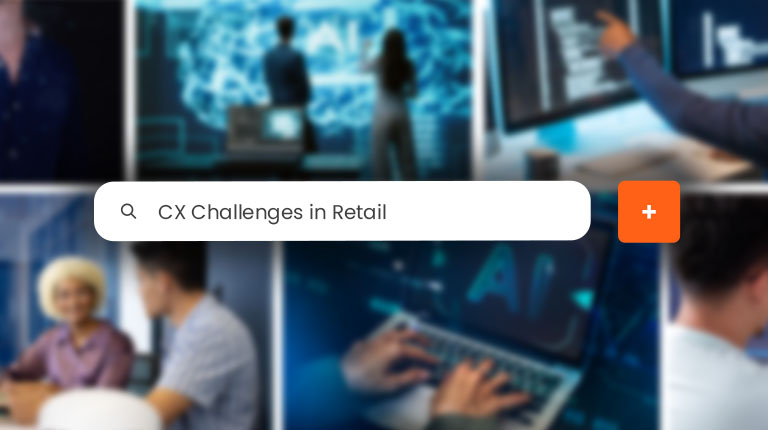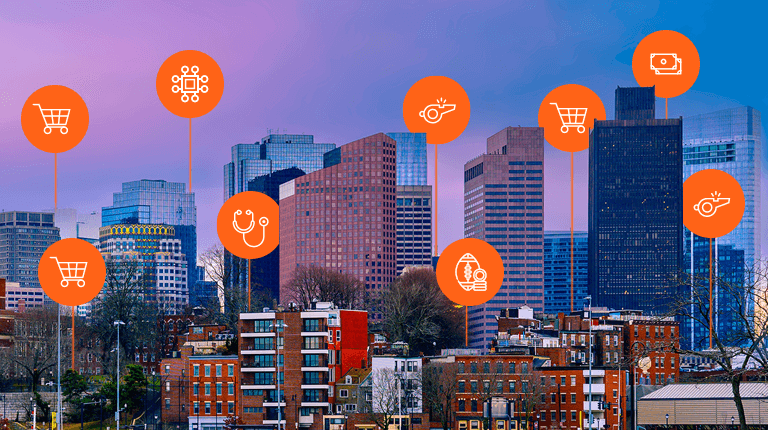We’ve covered the key questions your organization needs to answer when developing a customer care strategy. The next step is to select the right technology to automate your customer care. So where do you begin?
To provide consistent customer care throughout the year and across multiple channels, organizations scale support during volume peaks to minimize wait times, address customer needs through an omnichannel approach, and personalize customer service outreach.
It’s hard to cover all these bases without significantly increasing the cost of labor. But, automated solutions are increasingly becoming more sophisticated, and pushing the boundaries on what customer care can accomplish—without breaking the bank.
When weighing customer care technologies, consider the following qualities:
Is this solution flexible?
The ability to adapt is essential to an organization’s success. There may be spikes in volume around the holiday season for retailers, tax season for financial institutions, or summertime for utility companies, and the ability to counter these spikes is crucial. There are also spikes throughout a single day and organizations must scaleup to meet busier times of the day, and do so in an easy and cost-effective way.
There’s no need to add additional, expensive agents to address these increases in volume, or spend time training live agents. Automated solutions adjust automatically and provide consistent service every time.
Will it capture our brand voice?
Customers expect personalized care in service transactions, and that extra touch goes a long way. Training personnel in traditional contact centers to tailor services for each customer is a good start, but in addition to personalization, customers should also be provided a seamless and consistent experience no matter the platform they interact with a brand.
Automated customer care solutions can be custom-built to fit an organization’s needs. Organizations can select their own voice talent to make sure the words and tone of voice align with their brand. Implementing a customer care solution that doesn’t ‘feel’ like your brand can lead to a disconnected experience, and won’t help build customer loyalty.
Does this enable seamless customer interactions?
Historically, there was only one avenue into a contact center. As channels of communications have evolved with text, web chat, social media, email, and home devices, customer expectations are also continuing to grow. Many organizations still operate under a multichannel approach that offers customers choice in utilizing different channels for customer service. The downside is that these channels operate in their own silos and aren’t able to pass information between them.
Customers today not only want to interact with organizations on the device of their choice, but they also want to pick up where they left off. This translates to a customer starting a conversation while at work via chat, continuing that same conversation over email on their commute home, and wrapping it up when they get home over the phone – without having to repeat themselves. This omnichannel approach is what modernized customer care looks like.
Will it integrate with my existing IT infrastructure?
When building an in-house solution, there are several questions to consider based on your organization’s capabilities, strategy, capacity, and resources. Do we have the expertise to support this? Is this where we should be spending our resources? Can we scale up (easily) if needed? What kind of resources will be need to maintain this?
Identifying your in-house technological capabilities, and being realistic about your limitations will go a long way. It may make sense for your organization to tap into existing IT infrastructure, or it may make more sense to outsource.
Is the solution secure?
In 2016, 92% of IT firms reported cyber attacks on their clients. Following a year with an unprecedented number of breaches, security is becoming increasingly top-of-mind for consumers.The solution you pick has to treat digital data with the utmost importance (and that should be made clear to your customers as well!).
Flexibility, personalization and brand voice, channel strategy, current IT capabilities, and security are all critical factors to consider when selecting the appropriate technology to automate your customer care. Choose smartly. Your customers will thank you.




